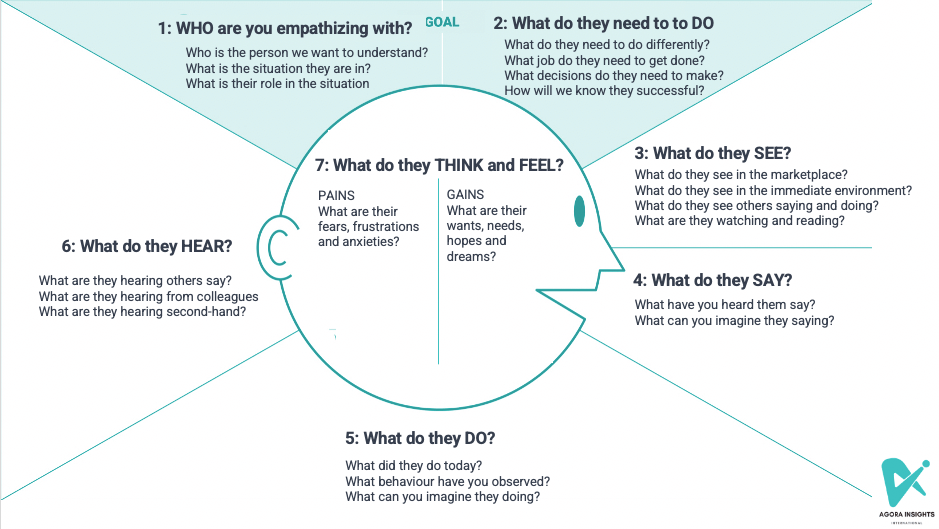Knowing your customers and stakeholders is essential for any business, even if it is as simple as knowing who comes in for their daily coffee. Therefore, creating a framework, empathy and structure related to our stakeholder can be extremely beneficial in determining what their needs are in a change initiative. In this post, we discuss analysing, communicating and understanding our stakeholders through empathy.
Again, as business analysts act as investigative journalists but discovering who is involved in the investigation. Even if BAs don’t include all the people from the initially investigate, it is important to know “who’s who” and why we need to know more about them.
Why stakeholder analysis is essential in project success

Working on change projects can be difficult, especially when it comes to digital transformation, because it involves multiple stakeholders, each with their own set of needs and pain points. Just as an early morning coffee rush can cause delays and frustration, we must plan for these busy times. In this case, thorough and complete analysis is critical because leaving out key stakeholders may result in a solution that does not meet their needs, wants, and expectations. Key stakeholders may be discovered later in the process, which suggests that tasks that are already underway or have been completed may need to be modified. This results in unexpected costs, both financially and in terms of time, as well as lower stakeholder satisfaction. If you do it correctly from the start, you will save time, money, resources, and your reputation.
The analysis results are then used to plan for stakeholder risks and decide how best to collaborate and discuss the project. When it comes to involving stakeholders, the level of complexity can rise in ways that are not proportional to the number of stakeholders involved in business analysis activities. This is important to understand because as the engagement grows from a few stakeholders to dozens, hundreds, or even thousands of people, we may need to use new or different techniques to best manage our stakeholders.
In this great video by provided by MindTools the author explains how knowing who the key stakeholders are in a project or initiative is critical. This could include your boss, colleagues, clients, shareholders, or even trade associations. There are three steps to doing a stakeholder analysis:
- brainstorming,
- plotting and
- analysing people's interests.
Empathy, reframing and understanding stakeholders

In part 4 of The Knowledge Brief, we discussed root cause analysis, which is concerned with getting to the bottom of problems that both the business and its customers are experiencing. You may have discovered that the coffee was too strong at a certain time of day, or that the group that comes in has a specific request, or that they have expectations that have not been met. When considering solutions, we want to understand what our stakeholders might need and want so that we can provide the best possible solutions. Of course, we need to consider these things for when we build great requirements. But how do we know if we have covered their needs effectively?
In this excellent Ted Talk, Nilufer Erdebil, a leading consultant in innovation and design thinking, discusses how empathy mapping is useful for determining both articulated and unarticulated needs. For example, what are people thinking and feeling but not saying? She also discusses complex environments where a simple persona might not be enough. In that case, think about your role in digital transformation and enhancement. Investigate the stakeholders like an investigative journalist would investigate the motivations and behaviour of their audience.
Mapping your stakeholders
We may wish to have a good understanding of our stakeholders through empathy, but we also need to frame our stakeholders in order to provide effective information.To investigate your stakeholders you have to catagorise them. For instance, the investigative journalist might identify someone might be a “witness” or a “participant”. To break these down into categories, we use various tools and techniques. These include Stakeholder Lists, Stakeholder Maps, RASCI, and/or Personas. A stakeholder map is used to figure out who the stakeholders are, how important they are, and how they are connected. Here, the background statement and critical success factors provide a key framework that directs the process. To figure out who the key stakeholders are, you need to ask questions about how they are affected by the problem and the proposed changes, and what role they play in the critical success factors.

It is useful to ask the following questions:
- Who is affected by the change?
- Who are our customers?
- How many people will eventually need your solution?
- Who will support the change?
- Who will pay for it?
- What does the customer need?
- When will stakeholder get involved?
- What type of information do they require?
For more information on Stakeholder Mapping - go to our blog post
Communicating with stakeholders
Communication skill is often taken for granted, but it actually requires some effective and practice. This competency, listed in chapter 9.4 of your BABOK® Guide, helps articulate the purpose and skill behind effective communication. In this well explained video by The Latimer Group, the author describes the 5 key elements of great communication. These five parts are:
- Clarity
- Brevity
- Context
- Impact
- Value
As seen in the video, communication is when a sender provides information to a receiver in a way that the receiver understands and requires. Sender and receiver should understand each other (including body language, tone, gestures, and expressions) for communication to work. A shared glossary, knowing diverse audiences and clear goals help avoid misunderstandings and problems and help BAs communicate effectively. As a sender you should know about receiver to plan effective communication. Again, each piece of information must be clear and concise.
We might want to ask ourselves:
- How often do they need to be communicated with?
- What needs to be communicated?
- What is the appropriate delivery method (written or verbal)?
- Who the appropriate audience is?
- When should communication occur?
- What is the frequency of communication?
- Where are the stakeholders located?
- What level of detail is appropriate for the communication and stakeholder?
- How formal should the communication be?
Key Learnings

- Working on change projects can be challenging because it involves multiple stakeholders with varying needs and pain points.
- Even if BAs don't include all the people from the initially investigate, it is important to know "who's who" and why we need to know more about them.
- It is critical to conduct a thorough and complete analysis because leaving out key stakeholders may result in a solution that does not meet their needs, wants, and expectations.
- The analysis results are then used to plan for stakeholder risks and decide how best to collaborate and discuss the project.
- Empathy mapping is useful for determining both articulated and unarticulated needs.
- We may wish to have a good understanding of our stakeholders through empathy, but we also need to frame our stakeholders in order to provide effective information.
- To investigate your stakeholders you have to catagorise them.
- A stakeholder map is used to figure out who the stakeholders are, how important they are, and how they are connected.
- Communication is when a sender provides information to a receiver in a way that the receiver understands and requires.
- As a sender you should know about receiver to plan effective communication.
Summary
In this post, we discussed why analysing stakeholders is important because, as the number of stakeholders grows, so does the complexity. Creating a framework and structure that describes who we are working with can be extremely beneficial in determining what is required in the project and who to speak with. However, analysis can be extended to include empathy, allowing us to better understand what is unsaid. Once we understand the structure and needs of the stakeholders, we should plan how we will communicate with them, taking into account their involvement in the project, communication needs, and the types of messages to be shared.
Understanding and working with stakeholders can be the most difficult aspect of the BA's role, but effective stakeholder management is critical to the success of any project.
Happy learning
References:
- MindTools
- Design Thinking for Complex Environments
- The Latimer Group
- BABOK® Guide: Chapters 3.2, 4.4, 9.4
© The Knowledge Brief is a product of Agora Insights Ltd. All rights are reserved
Post sponsored by Agora Insights Ltd

Post a Comment